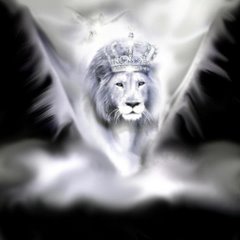.jpg)
Please click on some of my advertisers. Might find something you like!
Since I am in the process of finishing my book/story "Dragon", and, posting up some excerps from the book, I thought it would be pretty cool to run a series on dragons. Trying to touch on as much informative stuff as I can find or come across.
Many people have varying thoughts on dragons. Whether they, in fact, existed, or, were just mythology. As I always say, "all I am doing is providing you with food for thought so that you can opyn your mindz and call your own shot". As a very good friend and teacher told me, "the dragons are here, we just can't see them right now". Enjoy this series.
"The dragon is a mythical creature typically depicted as a large and powerful serpent or other reptile with magical or spiritual qualities. Mythological creatures possessing some or most of the characteristics typically associated with dragons are common throughout the world's cultures."
Overview
Dragons are commonly portrayed as serpentine or reptilian, hatching from eggs and possessing extremely large, typically scaly, bodies; they are sometimes portrayed as having large eyes, a feature that is the origin for the word for dragon in many cultures, and are often (but not always) portrayed with wings and a fiery breath. Some dragons do not have wings at all, but look more like long snakes. Dragons can have a variable number of legs: none, two, four, or more when it comes to early European literature. Modern depictions of dragons are very large in size, but some early European depictions of dragons were only the size of bears, or, in some cases, even smaller, around the size of a butterfly.
Although dragons (or dragon-like creatures) occur commonly in legends around the world, different cultures have perceived them differently. Chinese dragons (Simplified Chinese: 龙; Traditional Chinese: 龍; pinyin: lóng), and Eastern dragons generally, are usually seen as benevolent, whereas European dragons are usually malevolent (there are of course exceptions to these rules). Malevolent dragons also occur in Persian mythology (see Azhi Dahaka) and other cultures.
Dragons are particularly popular in China. Along with the phoenix, the dragon was a symbol of the Chinese emperors. Dragon costumes manipulated by several people are a common sight at Chinese festivals.
Dragons are often held to have major spiritual significance in various religions and cultures around the world. In many Eastern and Native American cultures dragons were, and in some cultures still are, revered as representative of the primal forces of nature and the universe. They are associated with wisdom—often said to be wiser than humans—and longevity. They are commonly said to possess some form of magic or other supernormal power, and are often associated with wells, rain, and rivers. In some cultures, they are said to be capable of human speech. They are also said to be able to talk to all animals and converse with humans.
Dragons are very popular characters in fantasy literature, role-playing games and video games today.
The term dragoon, for infantry that move around by horse yet still fight as foot soldiers, is derived from their early firearm, the "dragon", a wide-bore musket that spat flame when it fired, and was thus named for the mythical creature.
Part 2 of this dragon series will continue with SYMBOLISMS: Christianity, Chinese Zodiac, and, East Asia.
Peace & Soulz,
Bobby Sharpewww.myspace.com/akuasharpe BobbySharpe.blogspot.com






No comments:
Post a Comment